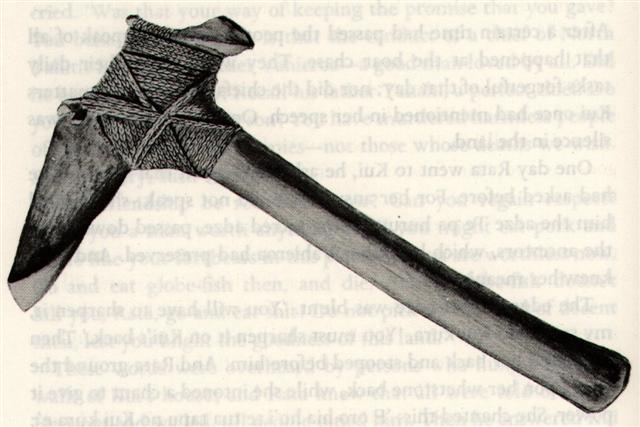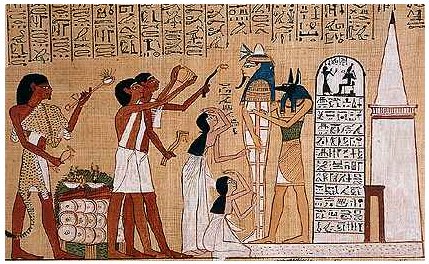"The pan-Polynesian elbow adze, with its variety of tanged and rectangular stone blades, is the cornerstone of Polynesian culture and yet the most controversial of the culture traits. H. O. Beyer was the first to note in 1948 that tanged and rectangular adz blades similar to those of Polynesia were known in very early archaeological periods in the northern Philippines, but nowhere else in Indonesia. He shows, however, that these tanged adz types were used in that area between 1750 and 1250 B.C. The problem again arises as to how they could have reached Polynesia. R. Duff in various lectures has extended this distribution back to continental Southeast Asia, but this brings us no nearer to Polynesia.
Tanged adzes are unknown throughout Melanesia, where the blade cross section is even uniformly cylindrical. Heine-Geldern, looking in vain for a local passage, admits that the tanged and rectangular adz could not have passed that way because of 'the radical difference in Polynesian and Melanesian blade forms'. Buck, likewise looking in vain for a passage, concluded that the Polynesian adz forms could not have passed the Micronesian way for the simple reason that no stone existed on those atolls, thus the Micronesians were obliged to make their cutting tools from shell. He pointed out that the Polynesian adz forms could not have derived from Southeast Asia at all since the lack of raw material in the 4,000-mile-wide Micronesian area created a vast gap, forcing the Polynesians to invent their own adz forms independently upon reaching their volcanic islands in the East Pacific.
We have seen ... however, that there is another and fully feasible sea route from Southeast Asia to Polynesia, the only one found possible by early European sailing ships. This route entirely avoids the Micronesian-Melanesian buffer territory and travels from the Philippine Sea with the Japan Current and westerly winds to the island-studded coast of Nortwest America, where all the elements turn around and bear directly down upon Hawaii. Once we substitute this northern island area for Mirconesia or Melanesia as roadside stations for Asiatic voyagers to the East Pacific, we immediately find steppingstones also for the tanged rectangular adz: it was the principal tool of the local Nortwest-Coast Indians right up to the arrival of Europeans. Captain Cook was the first to point out that the people of the Northwest American Coast used adzes similar to those of Tahiti and other Polynesian islands, and Captain Dixon, after Cook, noted that the adz of these coastal Indians 'was a toe made of jasper, the same as those used by the New Zealanders'. Captain A. Jacobsen stressed: 'Also the adz-handle and the method of securing the blade to the wooden handle are exactly the same among the Polynesian people as among the Northwest Indians.
Twentieth-century anthropologists have confirmed these early observations. W. H. Holmes emphasized that the tanged rectangular adzes of the Northwest Coast Indians resemble the adzes of the Pacific islands more closely than they do the corresponding tools of other American tribes, and R. L. Olson wrote in his study of the Northwest Coast elbow-adz: 'Its occurence in Polynesia in a form almost indentical with the elbow adz of America suggests a hoary age and extra-American origin'. It is accordingly possible that the tanged, rectangular adz, belonging only to a very early period in Asia and the northern Philippines, spread to Polynesia during a much later period, following the natural sea passage by way of Northwest America."

